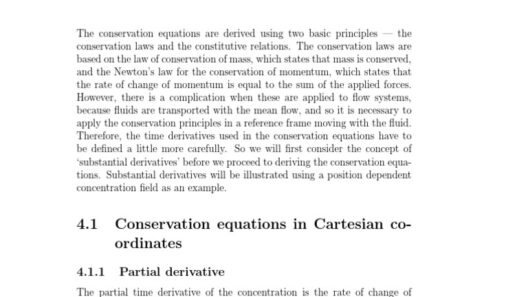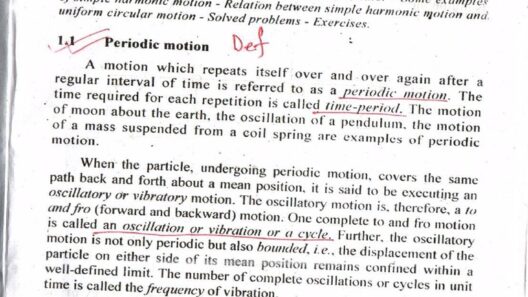Energy conservation is a fundamental concept in physics that permeates various scientific fields and everyday phenomena. As you embark on this journey through the intricacies of energy conservation, consider yourself a detective unraveling the mysteries surrounding energy. The law of conservation of energy states that energy cannot be created or destroyed; it can only change forms. But how can we ascertain whether energy is truly conserved in a given system? This exploration promises a shift in perspective, piquing curiosity about the mechanisms governing the world around us.
Understanding Energy Types
To begin deciphering energy conservation, it is essential to comprehend the primary forms of energy: kinetic, potential, thermal, chemical, and electrical, among others. Kinetic energy, the energy of motion, is readily observable in an athlete running or a car cruising down a highway. Potential energy, often associated with an object’s position or state, can be epitomized by a bowstring poised to release an arrow. Similarly, thermal energy manifests in the heat produced during combustion or friction.
Typically, energy transitions from one form to another, such as when potential energy transforms into kinetic energy as a roller coaster descends from its peak. Observing these transformations is critical in determining if energy is conserved within a system. Notably, while energy may appear to vanish, it often simply transforms into a less visible state, like thermal energy dissipated as heat.
Setting Up Your Investigative Framework
Your first task as an energy detective involves establishing the boundaries of your system. Define the objects and interactions you wish to examine. For example, consider a pendulum swinging back and forth. Identify all forces acting within the system — gravitational force, tension in the string, and air resistance. Understanding these forces elucidates energy transfers taking place. Failure to account for all relevant forces may lead to incomplete conclusions regarding energy conservation.
Next, think in terms of energy conservation equations. The total energy of an isolated system must remain constant, which can typically be expressed as:
E_total = E_k + E_p + E_th + …
Here, the total energy (E_total) equals the sum of kinetic (E_k), potential (E_p), thermal (E_th), and any other energy forms present. When observing the system, take note of energy inputs, outputs, and the various transformations occurring.
Measuring Energy Forms
In your quest to detect energy conservation, measurement is paramount. Employ tools such as a motion sensor to capture the kinetic energy of moving objects. Use a ruler to measure heights for potential energy calculations, and thermometers to record thermal energy changes. This empirical approach allows for detailed observations that can lead to more nuanced interpretations of energy conservation in action.
For example, if you were to measure the height and speed of a swinging pendulum at various points, you could calculate the potential energy at its apex and the kinetic energy at its lowest point. By analyzing these measurements, you can uncover whether energy is conserved during the pendulum’s motion. Look for the neat equation balancing potential and kinetic energy, indicative of energy conservation, illuminating truth in apparent energy discrepancies.
Identifying Non-Conservative Forces
As a diligent investigator, it is crucial to recognize the role of non-conservative forces in your analysis. Non-conservative forces, such as friction and air resistance, can lead to inevitable energy losses. As energy dissipates in the form of heat, total mechanical energy no longer remains constant. This phenomenon invites a broader inquiry about the efficiency of energy transformations within various systems.
Consider a cyclist pedaling uphill. While pedaling converts chemical energy from food to kinetic energy, friction between the tires and the road, as well as air resistance, introduce energy losses. Careful measurement of energy input and output allows you to gauge the efficiency of the cyclist’s exertion and the extent to which non-conservative forces diminish energy overall.
Energy Conservation in Everyday Life
Shifting the lens through which you view energy conservation can enhance your understanding of various phenomena in daily life. Whether it’s the heating of a house, the driving of a car, or the operation of electrical appliances, energy changes are ubiquitous and observable. Embracing this perspective heightens your awareness and fuels curiosity about energy conservation’s presence in unexpected realms.
For instance, when boiling water, the chemical energy stored in natural gas transforms into thermal energy as it heats the water. Understanding this transformation fosters a greater appreciation for energy’s omnipresence. Additionally, consider the implications of energy conservation within environmental contexts. Awareness of energy-efficient appliances can influence consumer behavior, inspiring a shift toward sustainability.
Final Thoughts: The Detective’s Toolkit
Ultimately, your role as a physics detective hinges on curiosity and empirical observation. Utilize a comprehensive toolkit that includes measurement devices, analytical thinking, and an acumen for recognizing transformation patterns. Establish clear boundaries for the systems under scrutiny, and engage in thorough examination of energy types and forces. Keep in mind the delicate balance of energy conservation and the impactful role of non-conservative forces. The journey may not provide straightforward answers, but the thrill of discovery will undoubtedly cultivate a deeper understanding of energy’s hidden narratives.
As you contemplate your own experiences and the world around you, let the principles of energy conservation illuminate the intricate tapestry of interactions, revealing the interconnectedness of all things. The energy detective never rests, always seeking to uncover the truths that shape our universe.







